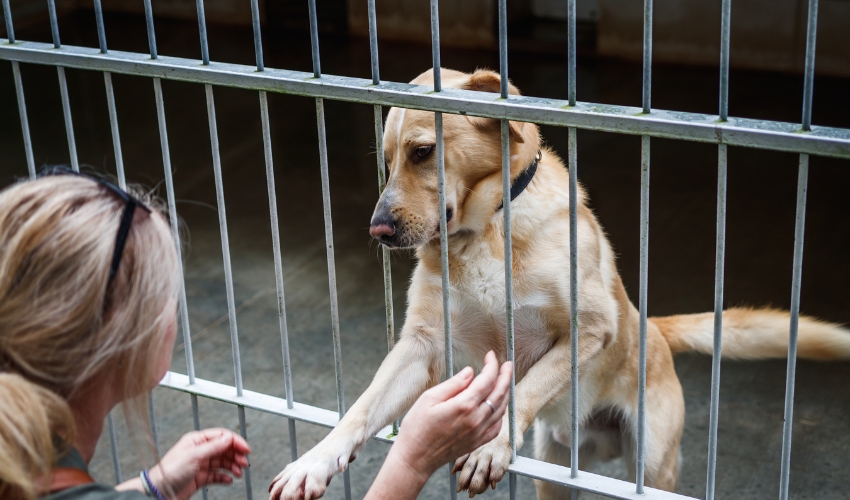Essential oils have become increasingly popular in recent times, drawing in people who are looking for natural solutions for a range of health and wellness issues. These strong oils, which are made from plant extracts, are highly valued for their fragrant qualities and suggested medicinal uses. Essential oils are used in many aspects of daily life, from holistic medicine and home cleaning to aromatherapy and beauty. Notwithstanding the fervor around their utilization, uncertainties persist regarding their security, effectiveness, and appropriate implementation.
Concerns over the safety of essential oils and their possible impact on their cherished furry friends also surface as pet parents discover the advantages of using them for themselves. Let’s talk more about the nuances of essential oils and how they might affect “fur babies,” highlighting the advantages and disadvantages of using them.
How will you know if essential oils are making your dogs sick?
When using a diffuser on your dog, stop using it immediately and take them outside for some fresh air if you observe any bad side effects. Seek out:
- Teary, red eyes
- remarkably wet nose
- sneezing
- Coughing
- breathing difficulties
- Sighing in anticipation
- Rosacea surrounding the mouth, eyes, or nose
- excessive face- or ear-rubbing
- Don’t overlook an overly tired or sleepy puppy, as dogs have also been known to become lethargic if they’ve consumed anything harmful.
Why are some essential oils toxic to dogs?
Certain essential oils include chemicals that can be fatal or detrimental to a dog’s physiology, making them toxic to dogs. Certain essential oils can be hazardous to dogs for a variety of reasons, including:
- Differences in metabolism: Dogs digest substances in a different way than people or other animals. They lack some of the enzymes required to efficiently degrade and remove some of the chemicals included in essential oils. Because of this, these compounds can accumulate to toxic levels in a dog’s body.
- Skin absorption: Essential oils can be absorbed via the skin, particularly if applied undiluted or in large doses, as dogs’ skin is more sensitive than that of humans. Inflammation, skin irritation, or systemic consequences could result from this, particularly if harmful substances enter the bloodstream.
- Ingestion: Because they are naturally curious creatures, dogs may swallow whatever they come into touch with, including essential oils. Toxic essential oil ingestion can cause vomiting, diarrhea, gastrointestinal distress, and more serious symptoms like organ failure or injury.
- Toxic substances: Even in little doses, several substances present in essential oils, such as phenols, ketones, and monoterpenes, can be harmful to dogs. Tea tree oil (which contains terpenes that can cause neurological symptoms and liver damage), pennyroyal oil (which contains pulegone, which can cause damage to the liver and nervous system), and citrus oils (which contain compounds that can cause gastrointestinal upset and photosensitivity) are a few examples of essential oils toxic to dogs.
Because of these things, it’s important for dog owners to use essential oils with caution around their pets and to stay away from oils that are known to be poisonous to dogs. To protect the safety and wellbeing of your animal friends, see a veterinarian before applying essential oils on or near pets.

Which particular essential oils are toxic to dogs?
According to Dr. Sarah Wooten, DVM and veterinary expert for Pumpkin Pet Insurance, “Our canine companions have much more sensitive snouts than humans”. In addition to having sensitive stomachs and keen senses of smell, dogs’ skin can react adversely to essential oils. Because essential oils are lipophilic, they readily absorb into the skin and enter the bloodstream. It’s nearly worse for a dog to absorb chemicals in this way than for it to ingest them. It is widely believed that inhaling essential oils, whether diluted or not, poses less of a risk to dogs than if the oils are ingested or get on their coats or skin.
- Tea Tree Oil: Tea tree oil includes terpenes that are harmful to dogs, namely cineole and terpinen-4-ol. Tea tree oil can cause symptoms like diarrhea, vomiting, drooling, weakness, tremors, ataxia (lack of coordination), and even seizures when ingested or applied topically. In extreme situations, liver damage can also result from tea tree oil intoxication.
- Citrus Oils: In high doses, chemicals like limonene and linalool found in citrus oils can be poisonous to dogs. Consuming citrus oils may cause upset stomach symptoms, such as drooling, vomiting, and diarrhea. When dogs are exposed to sunshine, citrus oils can also trigger photosensitivity reactions in them, which can result in burns or skin irritation.
- Cinnamon Oil: Cinnamaldehyde and eugenol, two substances found in cinnamon oil, have the potential to be toxic to dogs. When consumed internally, cinnamon oil can irritate and inflame the stomach, throat, and mouth, resulting in symptoms including diarrhea, vomiting, and drooling. Additionally, cinnamon oil can cause hypoglycemia in dogs by lowering blood sugar levels.
- Pine Oil: Alpha- and beta-pinene, two substances found in pine oil, have the potential to be poisonous to dogs. Pine oil consumption may disturb the digestive system and result in nausea, vomiting, and diarrhea. In dogs who are sensitive, breathing in the fumes of pine oil can also irritate the respiratory system and cause respiratory distress.
Remember that certain oils are more dangerous in lesser doses than others. The type, quality, and concentration of the oil all affect how harmful it could be to your dog if they eat it.
In conclusion, pet owners must put safety and caution first even though essential oils have the potential to benefit animals when used sensibly. Pet owners can utilize essential oils’ medicinal properties while preserving the health and welfare of their furry friends by being informed on the possible risks and appropriate usage requirements. Prior to applying essential oils on or around pets, always get advice from a veterinarian, particularly if your pet has underlying medical issues. Always dilute essential oils carefully, stay away from harmful oils, and keep a watchful eye out for any negative responses in your pet. Pet owners can integrate essential oils into their pets’ wellness routines and foster a happy, healthy, and harmonious environment for everyone by using them responsibly and with careful attention.












